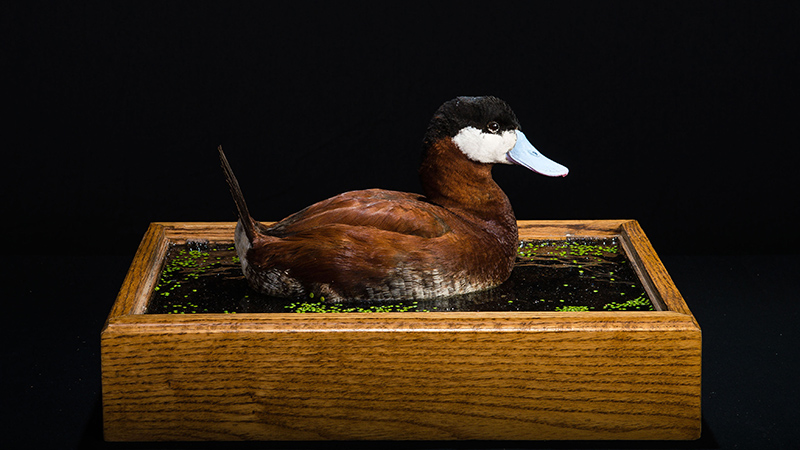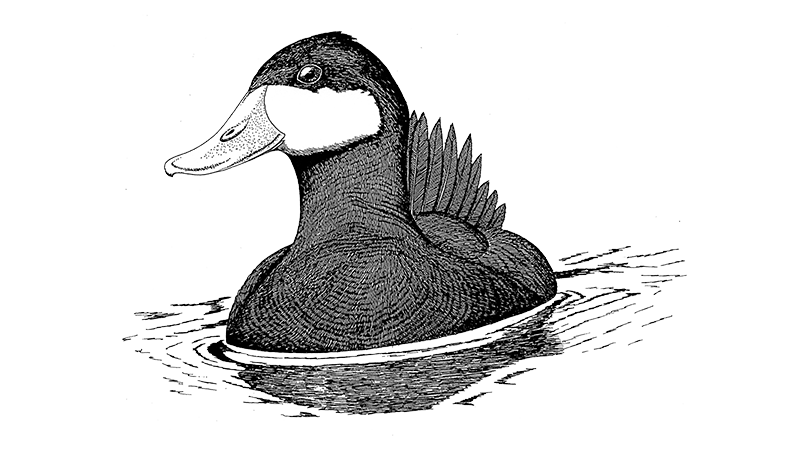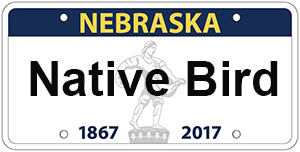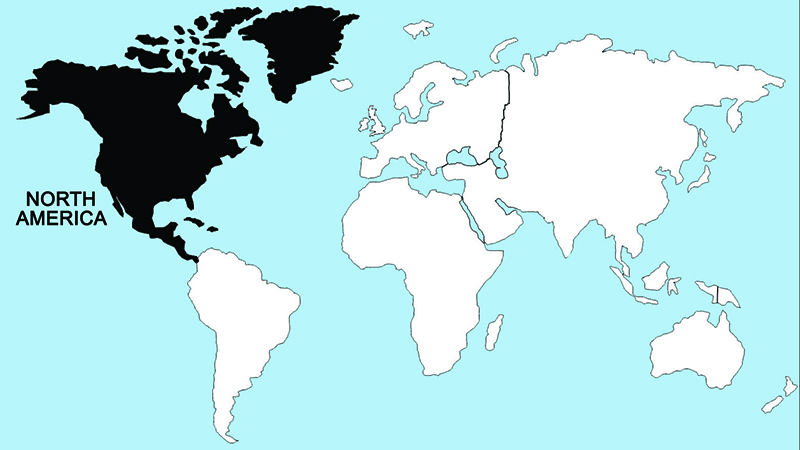North American Ruddy Duck

Male ruddy ducks lack the highly abbreviated late summer (“eclipse”) plumage typical of most American ducks, and instead have a prolonged winter plumage that is carried until well into spring. After their arrival on the breeding grounds, male ruddy ducks rapidly undergo a pre-breeding molt into their characteristic rusty breeding plumage, and their grayish bills become gradually infused with cobalt blue hues. By then the males are usually highly territorial, spending much of their daylight hours regularly patrolling the edges of reed beds, with tail erect, neck inflated, and its short horn-shaped feathers raised, searching for both females and possible male competitors.
Unlike the half-dozen or so displays of some ducks, the male ruddy duck persistently does one thing, but does it very well. Inflating its tracheal air sac, the male begins a series of progressively faster bill-pumping movements, tapping the underside of its bill on its inflated neck. This not only produces a hollow thumping sound but also forces air from the breast feathers, causing a ring of bubbles to form around the base of the neck.
Nests are built in rather dense reed beds over water that is deep enough for the female to slip away submerged should danger threaten. The water levels must also be fairly stable, so that the nest is not flooded or left high and dry. Such ecological situations are now rare, and are mostly limited to the prairie marshes, the northern plains states, and central Canada. About eight eggs are laid, which are incubated for 23–26 days. During the rather long fledging period of 52–66 days the young often become separated from their mothers, or simply stray off on their own.

Regions Birds Are Found


Collection Location & Year
Mexico 2002
Taxonomy
| Order | Anseriformes |
|---|---|
| Family | Anatidae |
| Tribe | Oxyurini |
| Species | Oxyura |
| Genus | jamaicensis |
Gender
Male
References
- Johnsgard, P. A. 1975a. North American Game Birds of Upland and Shoreline. Lincoln, NE: Univ. of Nebraska Press.
- Johnsgard, P. A. 1978. Ducks, Geese and Swans of the World. Lincoln, NE: Univ. of Nebraska Press.
- Elliot, A., J. del Hoyo, J. Sargatal, and C. Imboden, eds. 1992. Handbook of Birds of the World. Vol. 1 (Ostriches to Ducks). Barcelona, Spain: Lynx Editions.
- Johnsgard, P. A., and M. Carbonell. 1996. Ruddy Ducks and other Stifftails: Their Behavior and Biology. Norman, OK: Univ. of Oklahoma Press.
- Kear, J. 2005. Ducks, Geese and Swans. London, UK: Oxford University Press.